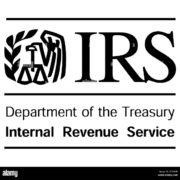 Print Friendly Version
Print Friendly Version
Complete discontinuance of profit sharing plan contributions
“I came across a prospect that froze it’s profit sharing plan several years ago, and has not made contributions since. Are there any concerns regarding the plan?”
ERISA consultants at the Retirement Learning Center Resource Desk regularly receive calls from financial advisors on a broad array of technical topics related to IRAs, qualified retirement plans and other types of retirement savings plans. We bring Case of the Week to you to highlight the most relevant topics affecting your business.
A recent call with a financial advisor from Colorado is representative of a common inquiry related to on going contributions to a profit sharing plan.
Highlights of Discussion
While contributions to profit sharing plans are generally discretionary, meaning a plan sponsor can decide from year to year whether to make a contribution or not, the IRS expects that contributions will be “recurring and substantial” over time in order for a plan to be considered ongoing and remain viable [Treas. Reg. § 1.401-1(b)(2)].
If contributions cease, a complete “discontinuance of contributions” has occurred in the IRS’s eyes, which triggers a plan termination and complete (100%) vesting of participants’ accounts [Treas. Reg. § 1.411(d)-2(a)(1)]. Contrast this with a “suspension of contributions” under the plan, which is merely a temporary cessation of contributions by the employer. A complete discontinuance of contributions still may occur even though the employer makes contributions if such contributions are not substantial enough to reflect the intent on the part of the employer to continue to maintain the plan (e.g., only forfeitures are allocated).
The IRS makes a determination as to whether a complete discontinuance of contributions under a plan has occurred by considering all the facts and circumstances in the particular case, and without regard to any employee contributions (i.e. pre-tax deferrals, designated Roth or after-tax contributions). According to the IRS’s exam guidelines at Part 7.12.1.4, examiners are to review IRS Form 5310, line 19a, which indicates employer contributions made for the current and the five prior plan years, to determine if the plan has had a complete discontinuance of contributions. In a profit sharing plan, if the plan sponsor has failed to make substantial contributions in three out of five years, there may be a discontinuance of contributions. Other considerations include whether the employer is calling an actual discontinuance of contributions a suspension of such contributions in order to avoid the requirement of full vesting, and whether there is a reasonable probability that the lack of contributions will continue indefinitely.
Under Treas. Reg. § 1.411(d)-2(d)(2) a complete discontinuance becomes effective for a single employer plan on the last day of the employer’s tax year after the tax year for which the employer last made a substantial contribution to the profit-sharing plan. For a plan maintained by more than one employer, a complete discontinuance becomes effective the last day of the plan year after the plan year within which any employer last made a substantial contribution.
If a plan suffers a complete discontinuance and the plan sponsor has made partially vested distributions, the plan’s qualified status is at risk. The plan sponsor can fix the error by using the Employee Plans Compliance Resolution System. The correction will require restoring previously forfeited accounts to affected participants, adjusted for lost earnings, and correcting IRS Form 5500 filings for the plan.
For additional information, please refer to the IRS guidance No Contributions to your Profit Sharing/401(k) Plan for a While? Complete Discontinuance of Contributions and What You Need to Know.
Conclusion
While employer contributions to a profit sharing or stock bonus plan are discretionary in most cases (check the document language), the IRS still expects them to be recurring and substantial to a certain extent. For example, if the plan sponsor has failed to make substantial contributions in three out of five years, there may be a discontinuance of contributions, which triggers plan termination and complete vesting of benefits.










